

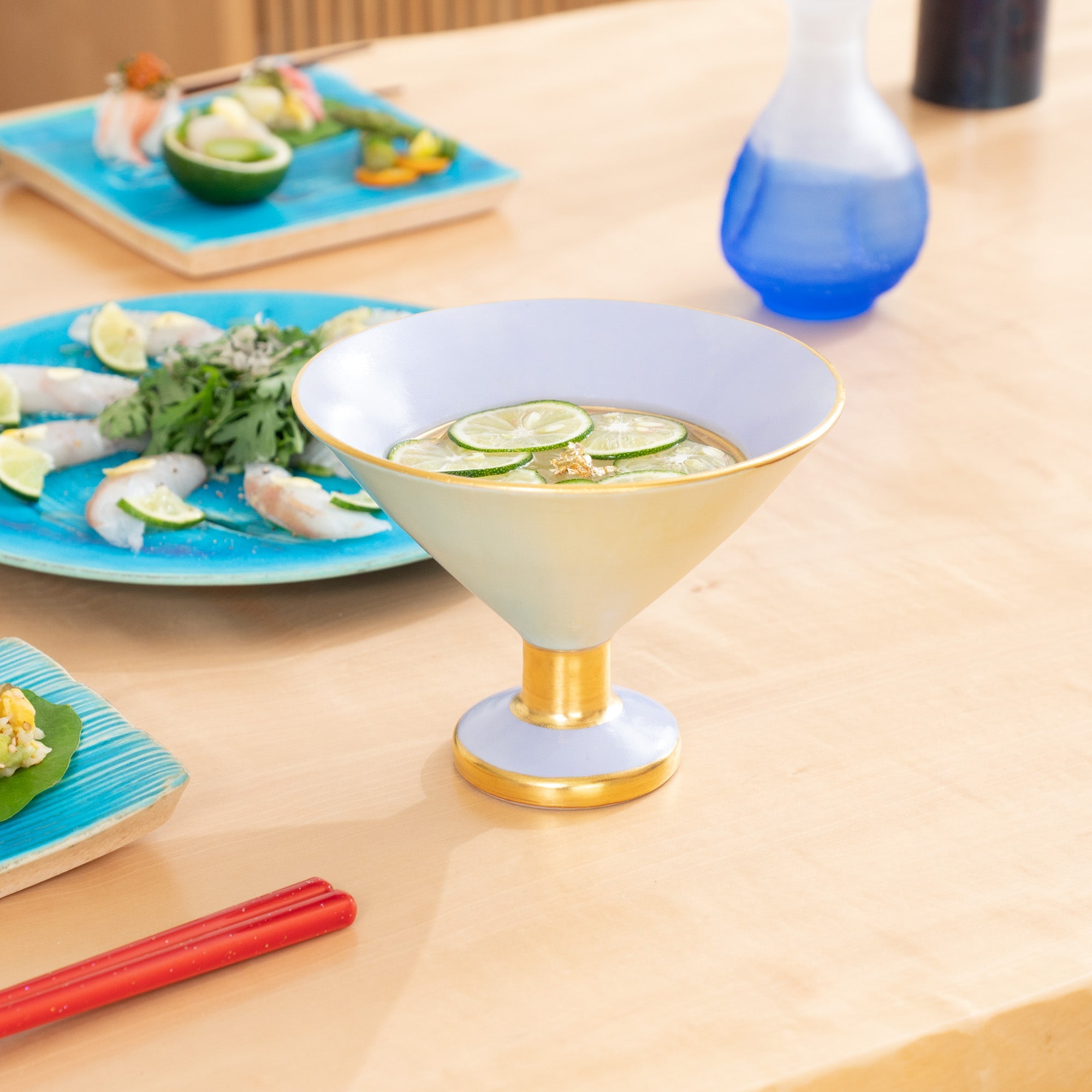
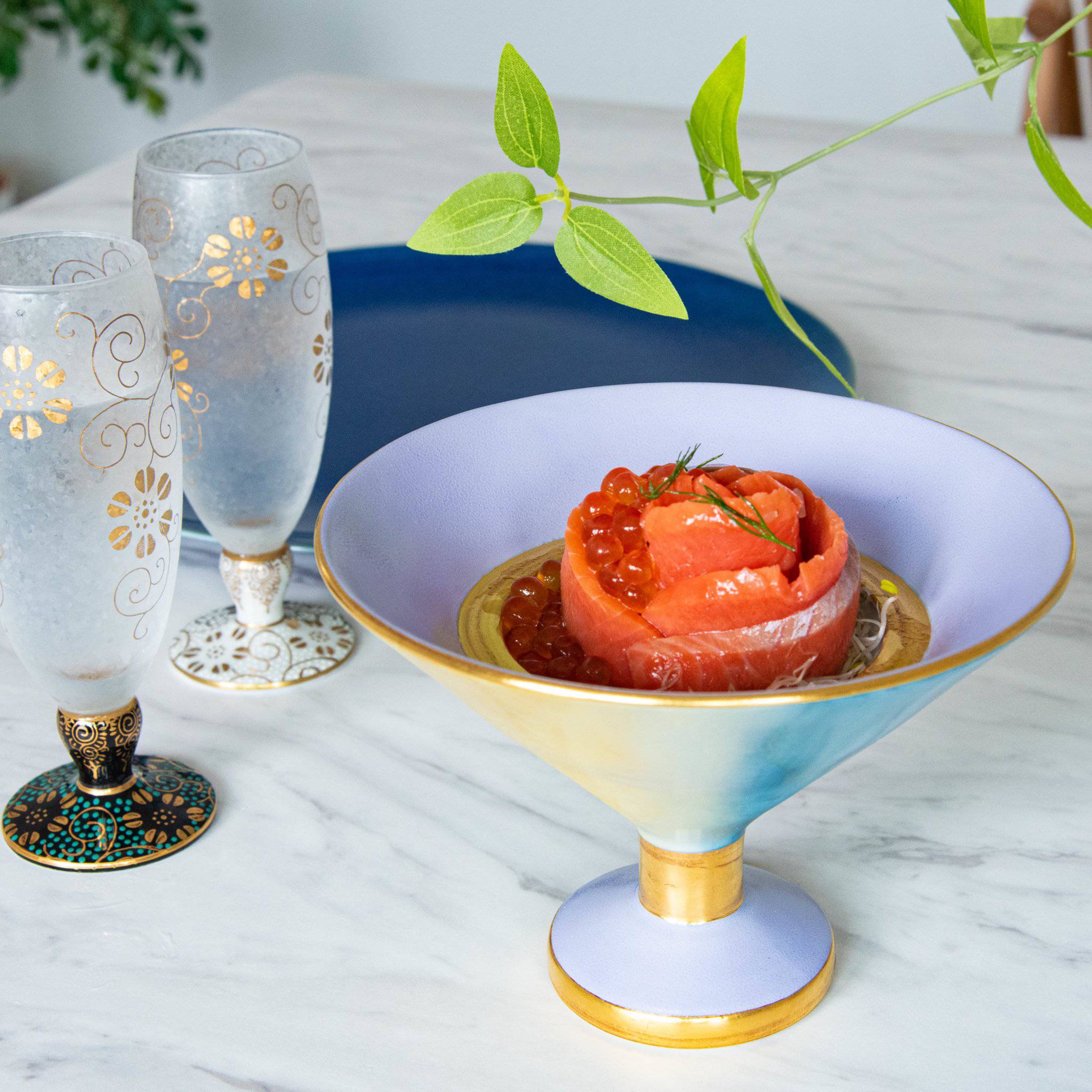
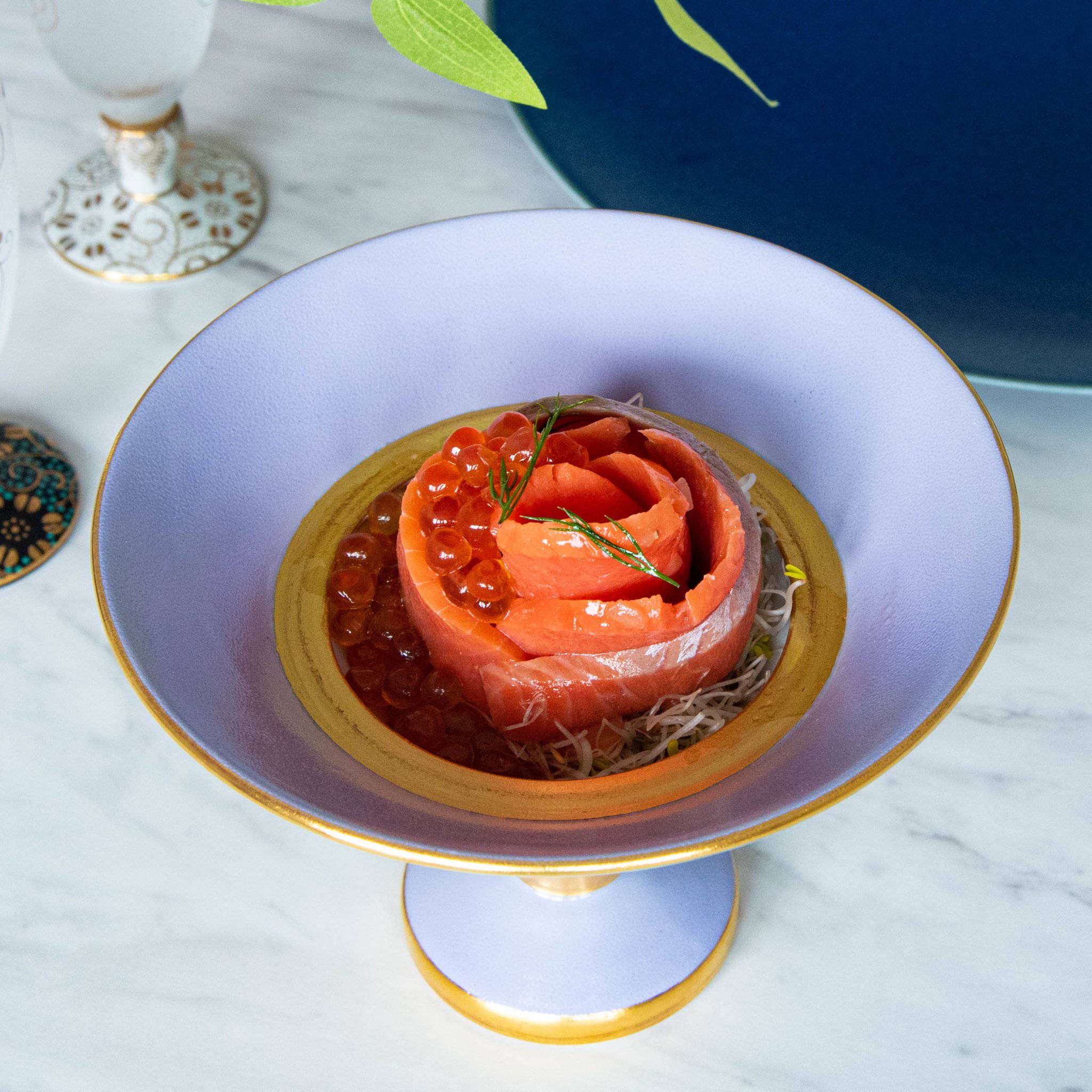
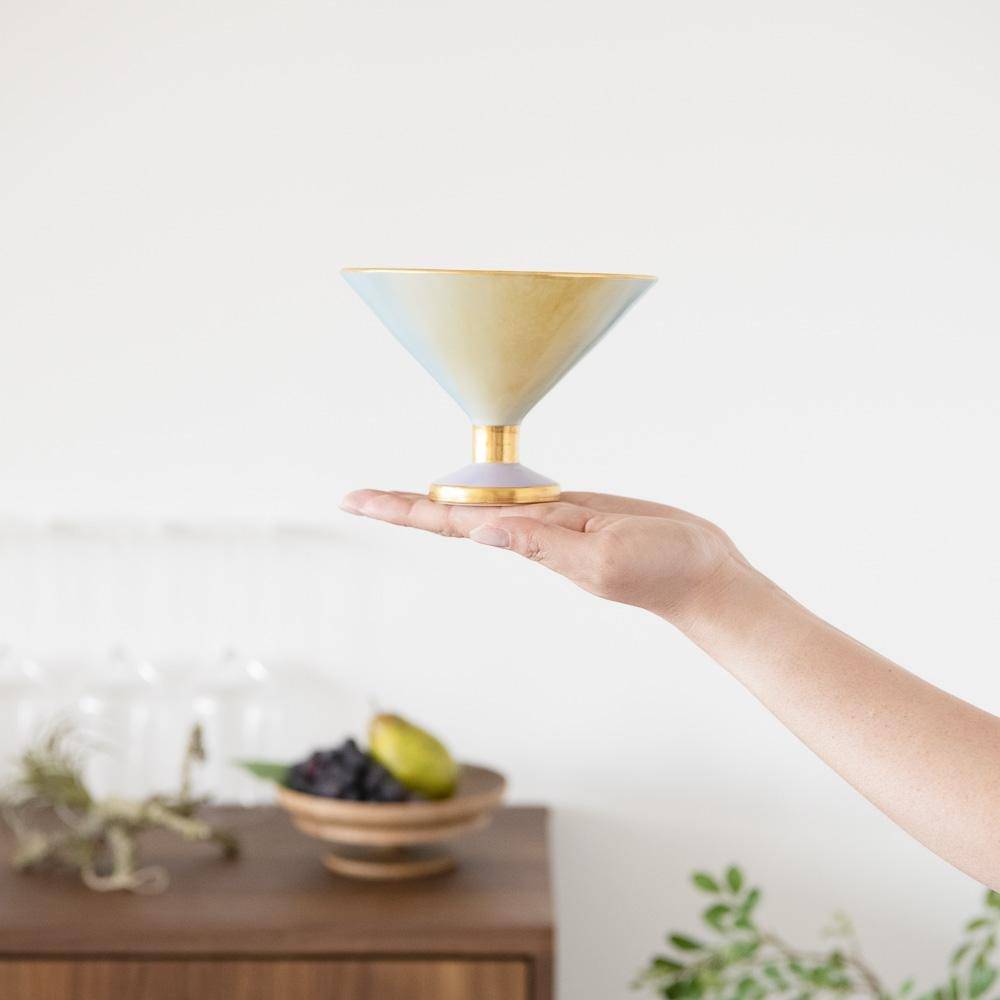
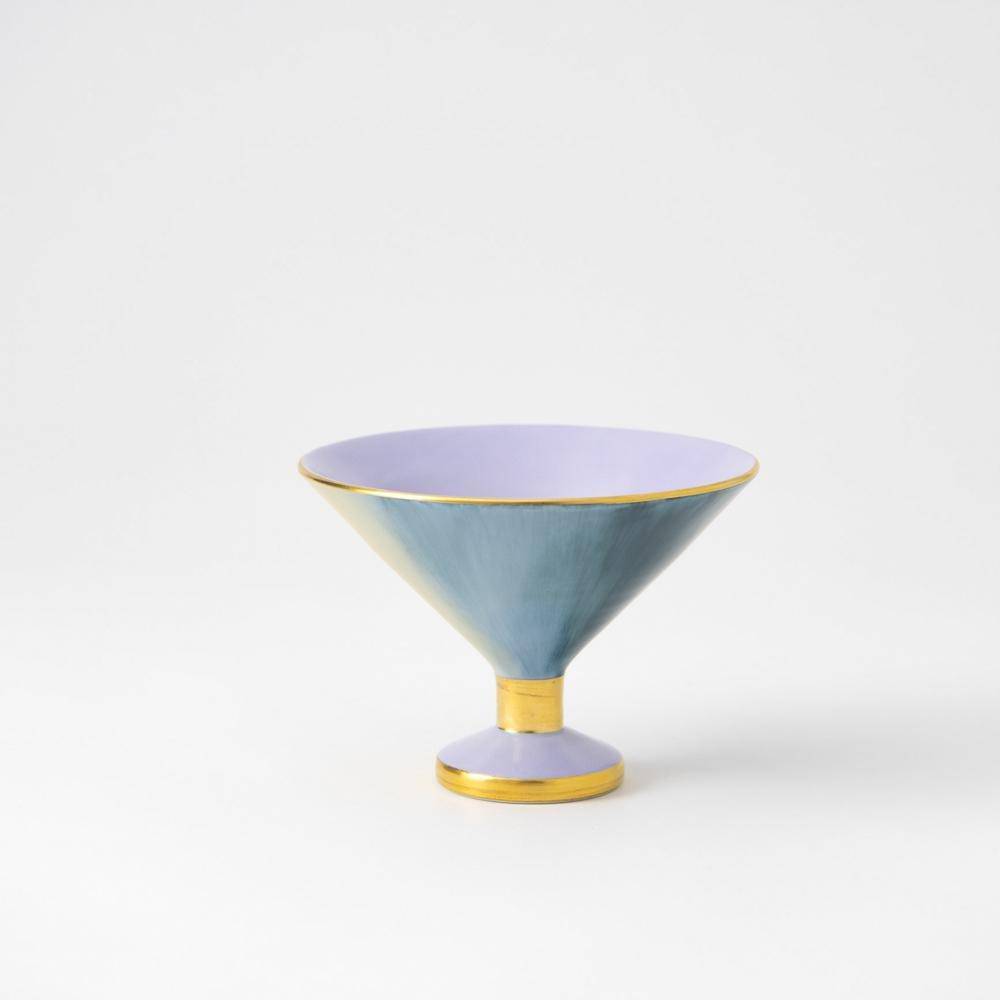
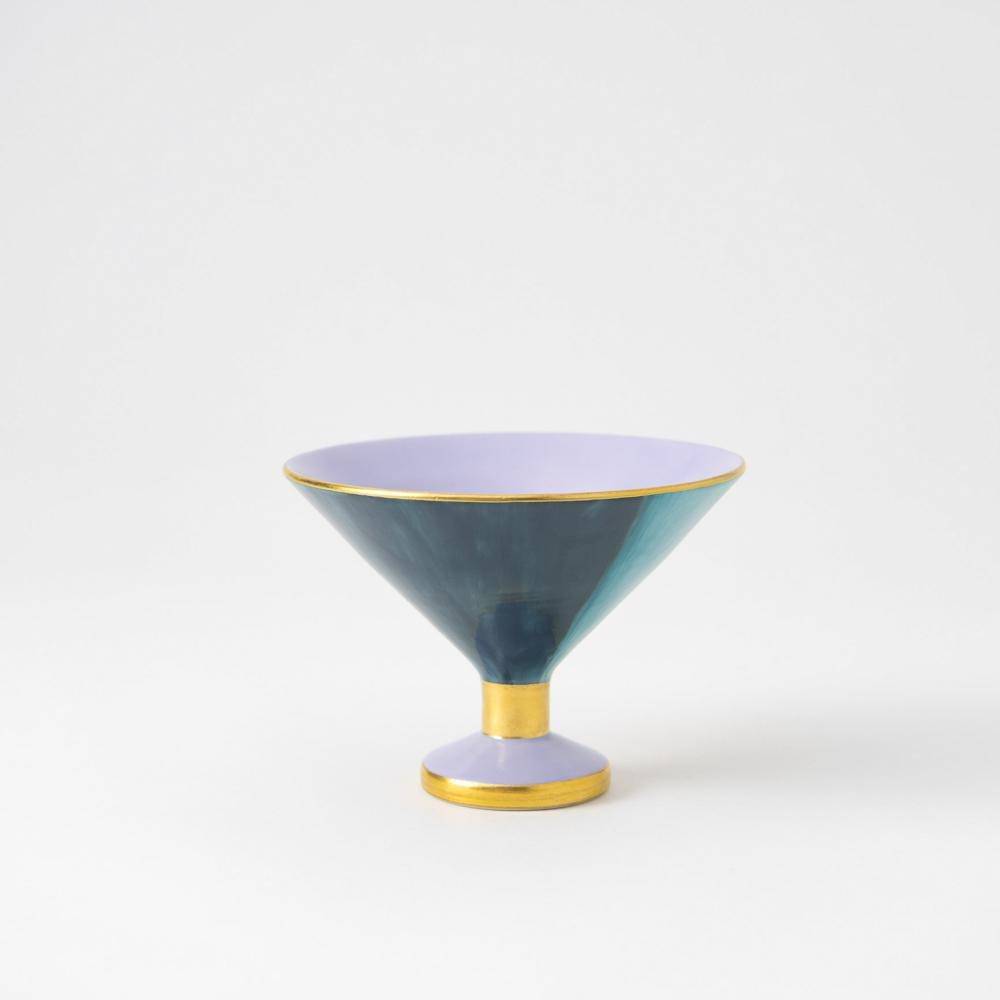
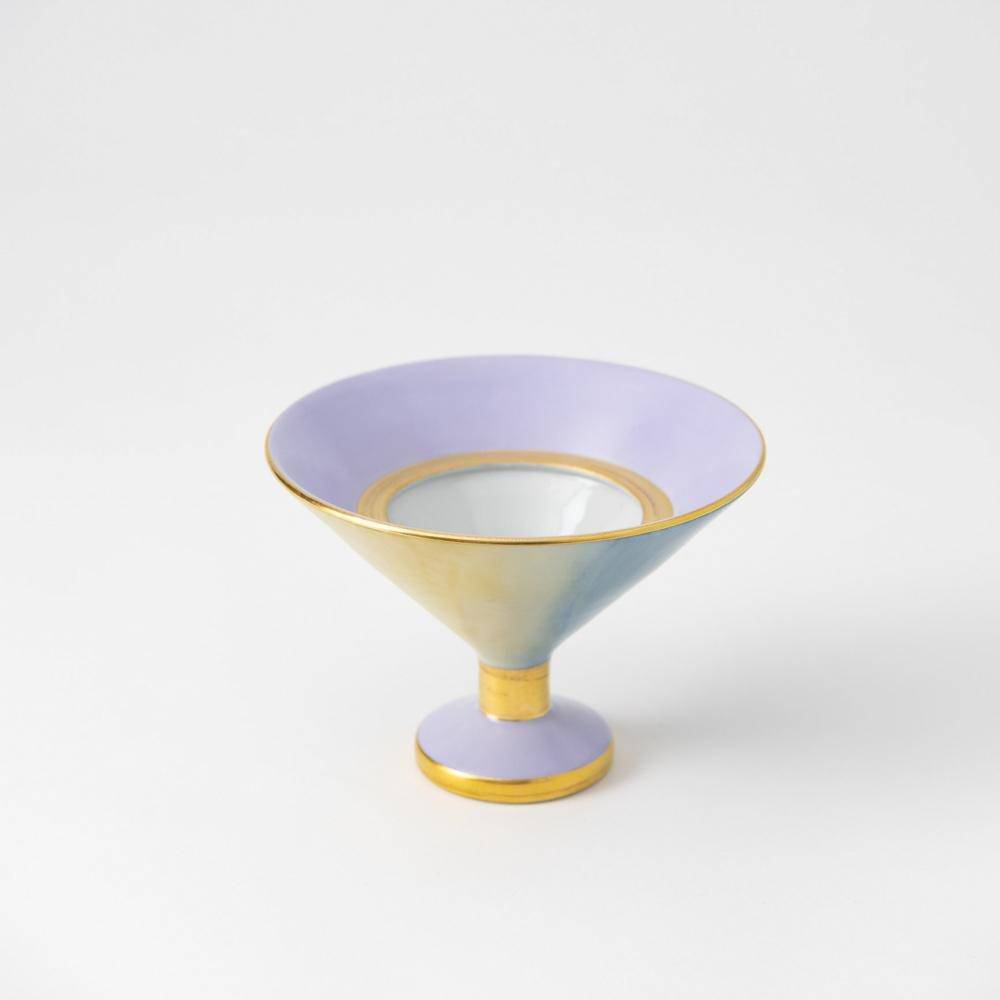
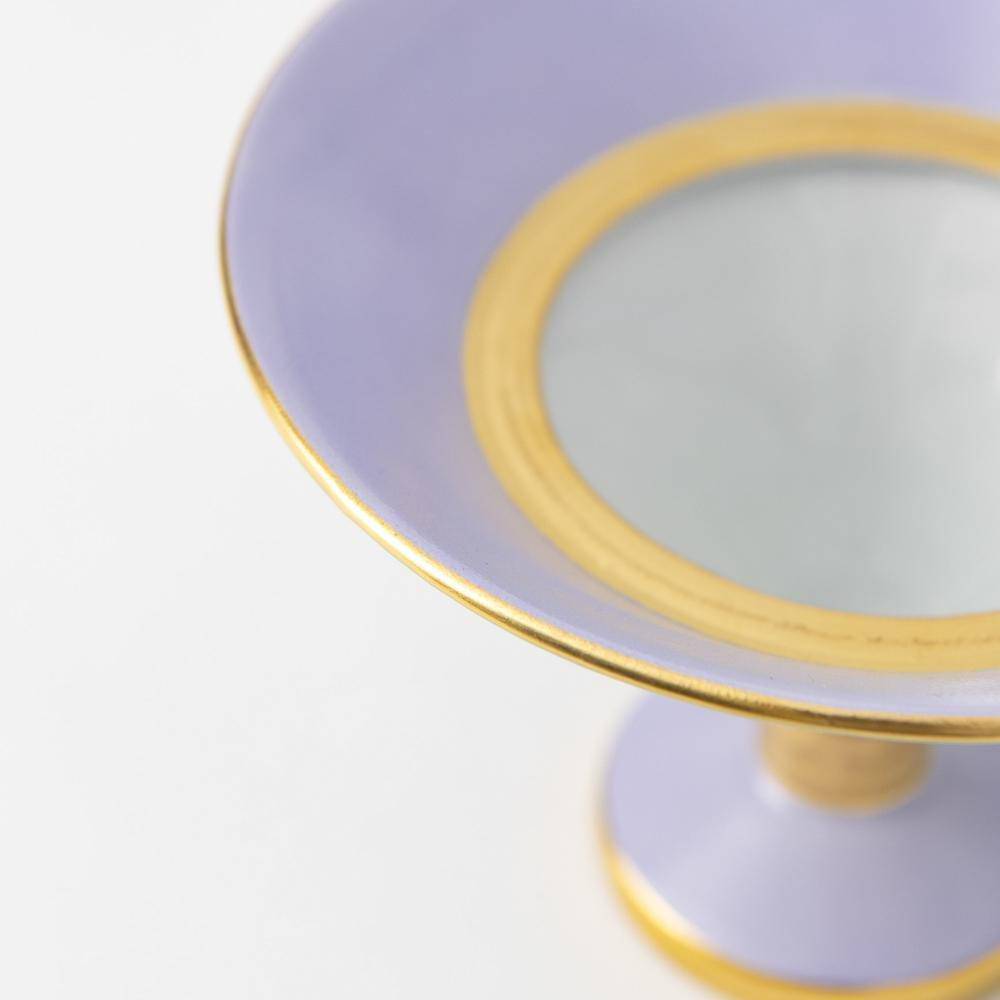
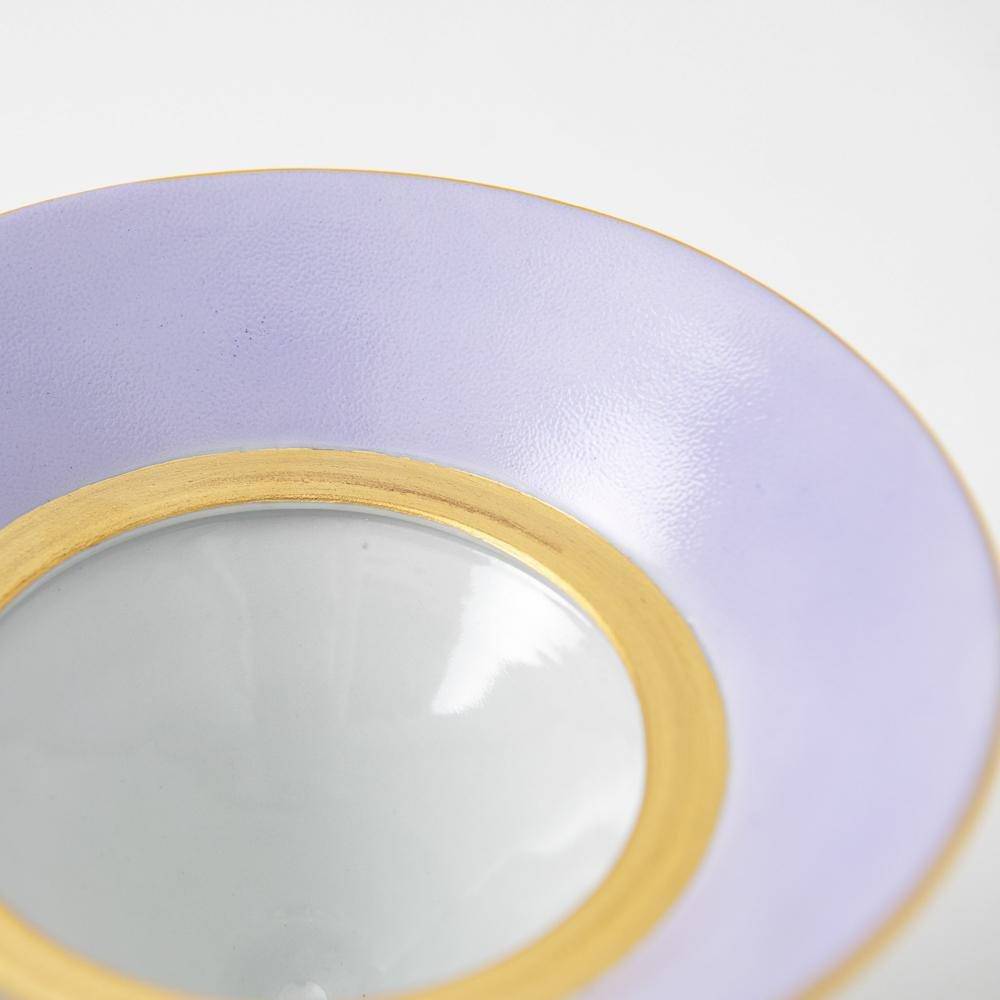
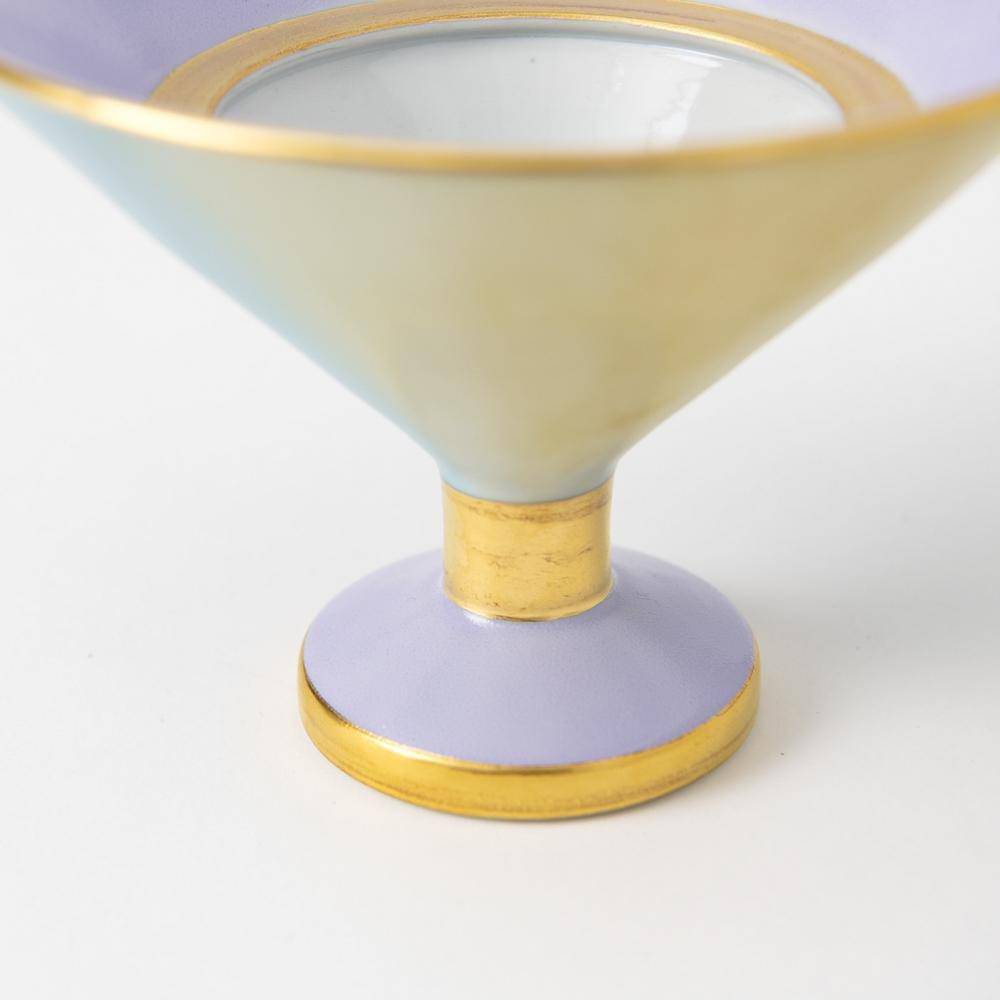
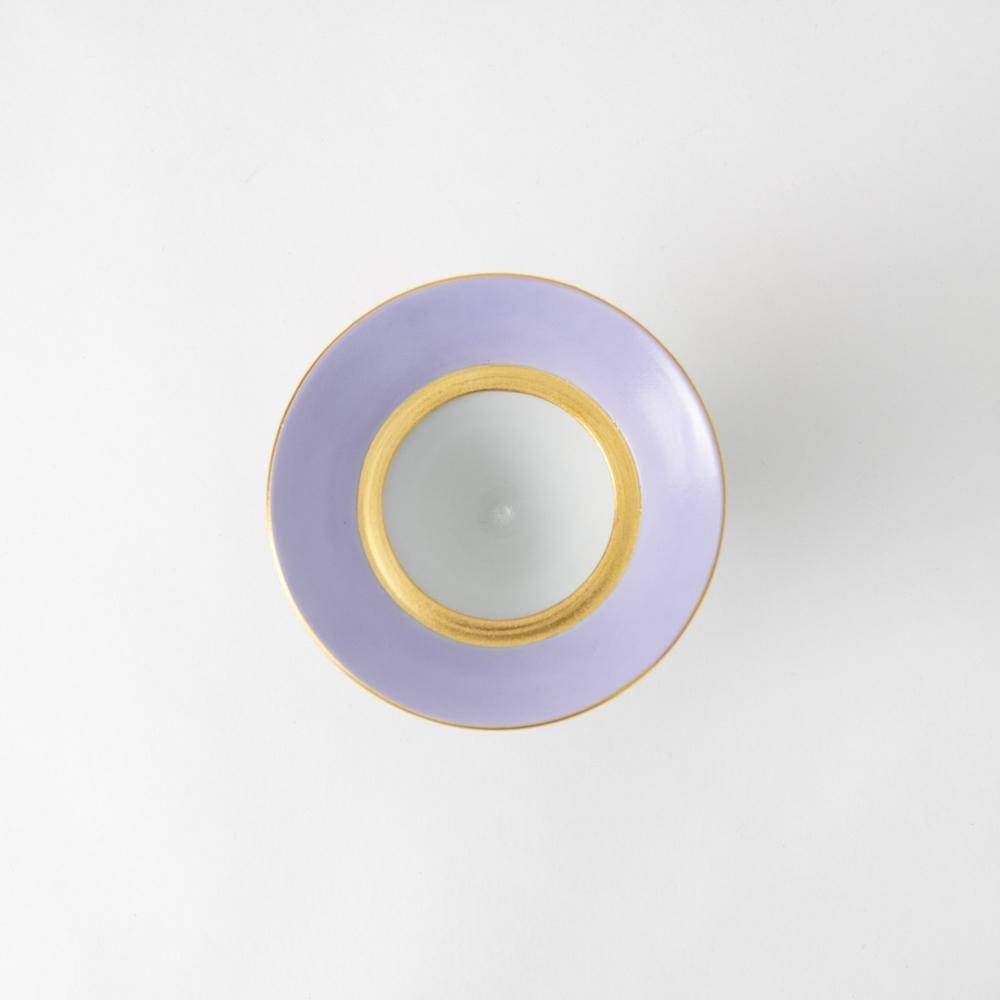
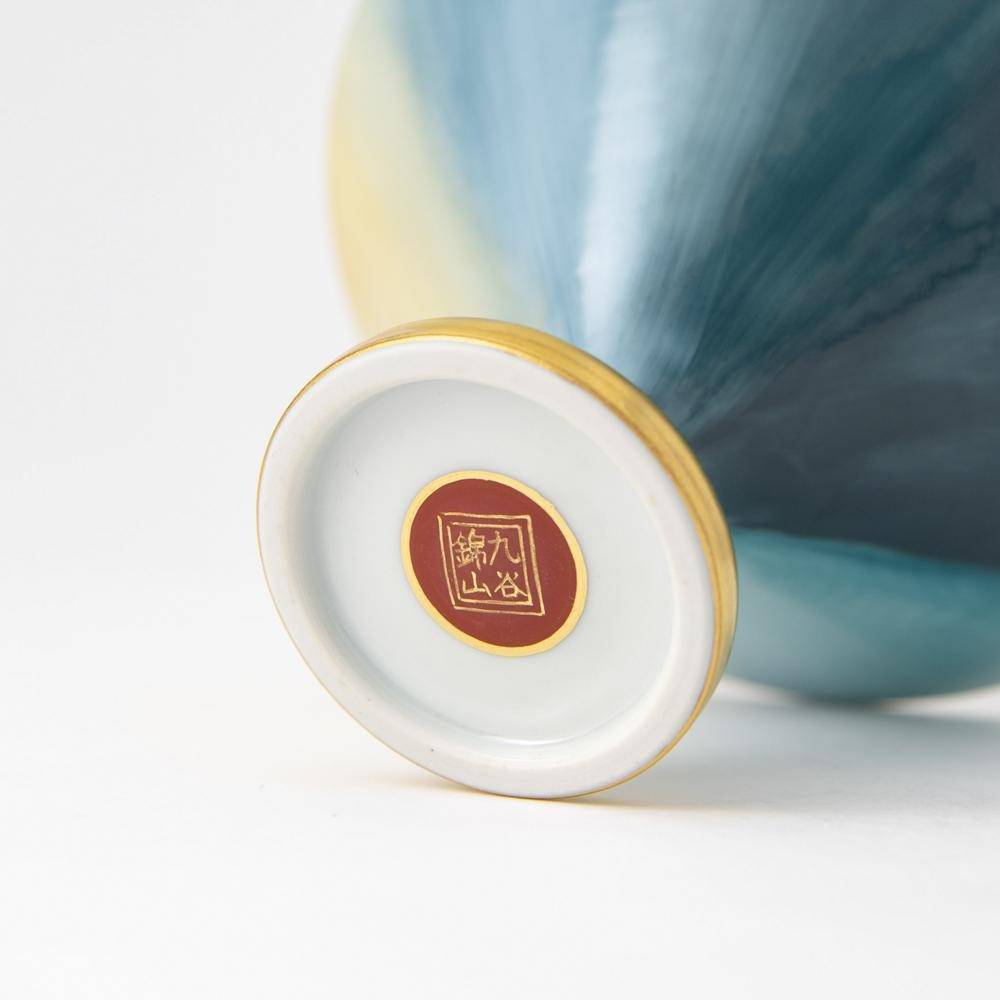
Kinzan Kiln Ukiyo Kutani Kobachi Bowl with Leg
Estimated Shipping Widget will be displayed here!
This elegant kobachi bowl with leg is suitable for serving appetizers, cold dishes and other small foods and makes them look more beautiful and attractive. It is also a great home decoration as it brings a sophisticated atmosphere to your room.
It is handcrafted by Kinzan Kiln, which has a history of over one hundred years and has always connected its traditions to the future.
The beautiful gradation expands your imagination, such as the sky's azure, the cosmic blue, the hazy spring light, or the clear light of early summer. The pale colors and delicate gold are perfectly match in this piece.
This series named "Ukiyo" was inspired by the thoughts of the ancients: "If this world is fleeting and undefined, I would like to live at will, loving the moon and flowers, singing songs, even if I were penniless". The blue and yellow gradation expresses the shifting light, making it a truly fragile and beautiful work.
In pursuit of making their finest works, Kinzan kilns have an exceptional production method that they involve in many creative process from designing the shape of the porcelain to grinding the gold powder exclusively for their products.
See other items from our Kinzan Kiln Ukiyo series.
PRODUCT DETAIL
- Quantity: 1 Bowl
- Dimension: 14cm(5.51in) H10.5cm(4.13in)
- Material: Porcelain - Kutani ware
- Origin: Made in Japan
- Brand: Kinzan kiln
Choose options














Estimated Shipping Widget will be displayed here!
International Shipping
Multiple International Shipping Options
Discounted shipping for over 500000!
Free shipping for over 5000000!
Insured shipping service
Full compensation for any damage during transit.
Made by Japanese craftsmen
Fair Pricing, free Furoshiki wrapping!

